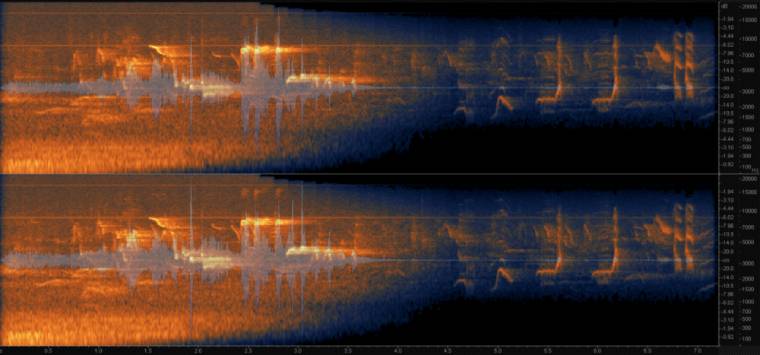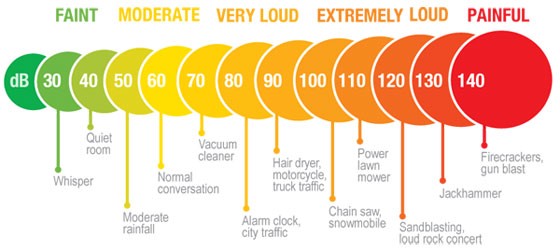Soundscape in Architecture: The increasing importance of auditory friendly environments

As Karen Van Lenten FAIA, University of Virginia professor puts it “architecture has been traditionally regarded as a visual field”. Focus has always been on creating visually appealing structures, whereas in reality, spaces impact, affect and interact more than one sensories. In fact, only when one is able to enjoy and experience a space with all their senses can they be totally present in that space with degree of comfort.
Visual and thermal are usually designed for and most spaces are odour neutral, but what about auditory experience?? Building environment today lack the design of soundscape in them, partially because most of the noise is accidental and cannot be taken into account in the same way as thermal. But due to changes in our life and work patterns, this discipline is more required than ever.
Need for soundscape design for individuals
Studies have proven how user friendly soundscapes are critical for cognitive responses. Uncontrolled noise often makes it difficult for the user to invest their attention in the right direction. In specific environments like schools, hospitals or offices, this reduces productivity dramatically. We observe such a pattern in our daily routine, when we pass through a construction site with lots of equipment noise, or in middle of traffic.
However, prolonged exposure to excessive noise bleeding into the space can be detrimental to cognitive health. Research shows that 50+ decibels cause stress levels to soar. Large spike of sound like loud alarm clocks or bus honking raises human heart rate and breathing. Beating constant loud noise like 1–2 hrs of street noise disturbs the mental relation with sound, sometimes affecting to hormonal secretion and therefore wellbeing.
Need for auditory experience for the community
In this connected community and with internet era, collaboration happens unlike ever before. Communication is the keystone of this phenomena, not only at workplaces, but also at other social aspects of lifestyle that form part of community behaviours. Modern planning needs to take into account this growing need of community.
More that often, it is seen that dialogues are getting hard to carry out due to ambient noise. Anything over 55db, human minds stops concentrating. For dense environments, where there are more than one conversation sources, human mind struggle choosing what to listen because of the limited auditory band. This phenomena is called as “Halfalouges” or half conversation and is one of the top causes of distraction.
It is with this in view that so many corporates adopt open office design for their 100% work space, disproportional to there working needs and related noise generation patterns. The results of this design is that it can be extremely challenging to keep noise levels in control and this drastically impact work output. Steelcase research points to global disengaged workforce to be 52% and in India 33%.

Solving soundscape needs
Need for soundscape is being acknowledged amongst many members of the design community. Auditory experience is affected by location, shape, surface materials and a number of occupants in space and the design is tweaked accordingly. Some good examples are fountains and pebble paths to create a soothing soundscape in calm, relaxing environments. Mostly they emit frequencies closer to the human body thus feeling relaxed.
The three wind reeds at the entry plaza of the Children’s Museum of Richmond is another good example of how a quiet acoustic environment can be created despite surrounding a loud and busy landscape. The design of the J.F.K Memorial is another testament to the fact that a calm environment can be created in the midst of a sound- intense location.
Soundscape for Urban homes
Urban homes are mostly subjected to traffic noise and high rises building suffer from noise boom. Use of window seals, double pane windows in the direction of the noise, buffer layer if the living space is at the lower floor and removing internal noise reflection can help improve home soundscape.
Soundscape for offices
A most important tool for soundscapes office is the design as per usage pattern before deciding the ratio of open vs cabin organisation and proximity diagram. Reduce the movement by strategically placing common facilities and provide easy access corners for private conversations, less hard surface, provision of sound panels, avoid gaps in partitions, use sound absorbent material.
Soundscape for healing environments/ hospitals
Most sources of noise in a hospital are internal more than external. Uses of Door and window seals, acoustical friendly surfaces in corridors, high noise activities parked towards a corner or end with the provision of the noise barrier,
AC design, understanding noise reflecting surfaces during design can help natively control. Planning for silent equipment and soft floor in patients resting areas, loose soft surfaces like curtains, soundscape panels in areas with high footfall.
Soundscape for schools.
Schools are natively designed around atriums or log corridors, both of them generate sound boom and amplification of noise. Avoid long corridors and rectangular atriums, provide break spaces out spaces it the length is large, design scattering surfaces, sound absorption mechanism either vertically or on the ceiling can help, use of indoor landscape can drastically improve soundscape.
Soundscape for landscape/ open areas
Irrespective buildings internal soundscape, landscape posses best of opportunities for the external soundscape. Use of buffers like plant hedge or earth berms, use of water bodies, waterfall, fountains and wind chimes for soundscape generation, natural surfaces are great scattered and absorbers of noise levels. Landscape elements also help in addressing other aspects of built environments like climate responsiveness.
Architecture is an interface for human experience. We believe it is no longer viable to ignore the auditory sense when designing any space. Taking it into account and designing with desirable acoustics firmly embedded into the environment is what users shall need in the future.
Van Lengen describes this visual focus as an ‘imbalance’ that needs to be corrected. With outside environments getting busier and noisier by the day, It is important to design a responsive environment and create a soundscape that is conducive to the end user.

